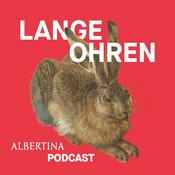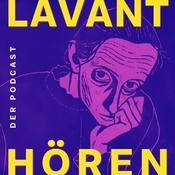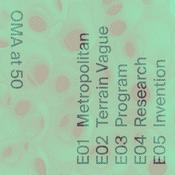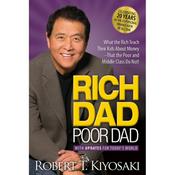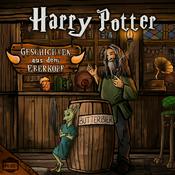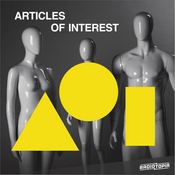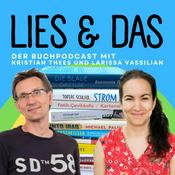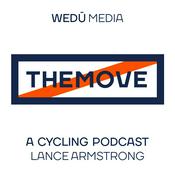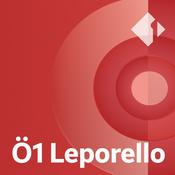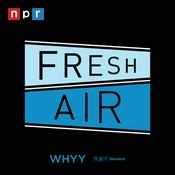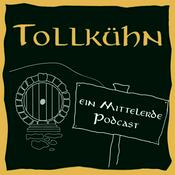Verfügbare Folgen
5 von 794
- 816: Crumbs with Ben Mims and Wild Chocolate with Rowan JacobsenIt’s the holiday season, and we’re kicking it off this week with some sweet treats. First, food editor and recipe developer Ben Mims joins us with his latest project, covering over 300 cookie recipes from Asia to the Levant to Scandinavia to the Caribbean. The varieties are astonishing. We get into cookie styles, the fascinating ingredients in regional cookies, and the hundreds of flavor combinations. Ben is the author of Crumbs: Cookies and Sweets from Around the World. And he left us with a recipe for Guava-Filled Butter Cookies from Brazil. Then, we step into the world of wild chocolate with Rowan Jacobsen. We hear about the new breed of cacao farmers and the amazing flavor profiles found in wild chocolate and meet some of the farmers who are making it. Rowan is the author of Wild Chocolate: Across the Americas in Search of Cacao’s Soul.Broadcast dates for this episode:December 6, 2024 (originally aired)December 12, 2025 (rebroadcast)Subscribe to @TheSplendidTable on YouTube for full podcast episodes and full-length video interviews!Your support is a special ingredient in helping to make The Splendid Table. Donate today.--------49:24
- 839: A Journey Through Southern Food with Michael W. Twitty and Deb FreemanThis week, we’re taking a trip through the South and its food – how it tells the story of a region shaped by migration, memory, and culture. First, we talk with scholar and writer Michael W. Twitty about his new book, Recipes from the American South, a sweeping look at the many communities – Black, white, Indigenous, immigrant – whose traditions built Southern cooking as we know it. Michael reflects on the histories that define the region and leaves us with his recipe for Maque Choux, the Louisiana classic made of corn and peppers. Then, we turn to writer and filmmaker Deb Freeman for a deeper look at one of the South’s most influential voices: Edna Lewis. Her new PBS documentary, Finding Edna Lewis, traces how Miss Lewis’s rural Virginia roots shaped her cooking and her revolutionary impact on American food. Deb shares why Lewis remains essential today and what we can still learn from her.Our annual cookbook giveaway is live! To enter for free, visit splendidtable.org/cookbookBroadcast dates for this episode: December 5, 2025 (originally aired)Subscribe to @TheSplendidTable on YouTube for full podcast episodes and full-length video interviews!Donate to The Splendid Table today and we will show our appreciation with a special thank-you gift.--------49:28
- Bonus Episode: Do Holidays Leave You Exhausted, Not Restored? Priya Parker, Francis Lam & Kate Bowler on CelebrationToday we have a bonus episode for you from Happier with Gretchen Rubin, featuring our very own Francis Lam. Gretchen Rubin is HAPPIER, and she wants you to be happier too. The #1 bestselling author of The Happiness Project and Better Than Before gets more personal than ever as she brings her practical, manageable advice about happiness and good habits to this lively, thought-provoking podcast. Gretchen’s cohost and guinea pig is her younger sister, Elizabeth Craft, a TV writer and producer living in Los Angeles, who (lovingly) refers to Gretchen as her happiness bully.On this episode of More Happier:It’s easy to get swept up in a cycle of holidays that feels more like a relentless to-do list than a source of joy. In this Celebration Roundtable, we talk about how to embrace the holidays as opportunities for intentional connection and meaning.--------36:23
- 796: Soup Season with Mariana Velásquez, Gregory Gourdet, and Jing GaoThis week, we welcome the cold with delicious soup! Food Stylist Mariana Velásquez Villegas, author of Colombiana: A Rediscovery of Recipes and Rituals from the Soul of Colombia talks us through Colombia's biodiversity and regional identity and the unique foods it inspires like Sancocho. This hearty stew brings people together in a communal dining experience. Be sure to listen to her playlist while preparing it! Then, we talk about Haitian cuisine with award-winning chef Gregory Gourdet as he shares his childhood memories of growing up, commemorating Haitian Independence Day with Soup Joumou, a hearty squash-based soup typically served on New Year's Day. Gregory Gourdet is the chef-owner of Kann in Portland, Oregon, and the author of Everyone's Table. Then, chili sauce entrepreneur Jing Gao, author of The Book of Sichuan Chili Crisp, talks about Hot Pot, a zingy broth served in a large metal pot that gets tastier as you feast.Broadcast dates for this episode:January 26, 2024 (originally aired)January 17, 2025 (rebroadcast)November 28, 2025 (rebroadcast)Subscribe to @TheSplendidTable on YouTube for full podcast episodes and full-length video interviews!Our annual cookbook giveaway is live! To enter for free, visit splendidtable.org/cookbookCelebrate kitchen companionship with a gift to The Splendid Table today.--------49:38
- Turkey Confidential 2025Join us for Turkey Confidential, our must-listen-to annual Thanksgiving Day broadcast! This year’s guests are Samin Nosrat, author of bestseller Salt, Fat, Acid, Heat and Good Things; Brooklyn-based recipe developer Yossy Arefi, author of Snacking Bakes and Snacking Cakes; Vivian Howard, author, TV personality, and chef, known for This Will Make It Taste Good and Deep Run Roots; Evan Kleiman, chef, cookbook author, and host of KCRW’s Good Food. And, of course, Francis!Broadcast dates for this episode:November 27, 2025Subscribe to @TheSplendidTable on YouTube for full podcast episodes and full-length video interviews!Generous listeners like you make The Splendid Table possible. Donate today to support the show.--------1:55:57
Weitere Kunst Podcasts
Trending Kunst Podcasts
Über The Splendid Table: Conversations & Recipes For Curious Cooks & Eaters
If you love to eat, cook and travel, The Splendid Table is your weekly go-to source. Our public radio program has been connecting people through the common language of food for over three decades. Hosted by award-winning food journalist Francis Lam, each week we bring you fresh voices and surprising conversations at the intersection of cooking, people and culture. We cover all things food – from recipes and restaurants to history and science, farmer’s markets and of course, the Thanksgiving feast. Our wide-ranging, freewheeling guest list includes both world-class and rookie chefs, bestselling authors, scientists, poets, musicians, and even an astronaut in orbit!
Subscribe to our weekly newsletter, The Weeknight Kitchen, to receive practical, delicious weeknight-ready recipes. Once a month, we also share a sweet treat or baking recipe. Sign up at Splendidtable.org/newsletter
Produced by American Public Media. Part of the Vox Media Podcast Network
Podcast-WebsiteHöre The Splendid Table: Conversations & Recipes For Curious Cooks & Eaters, Lange Ohren - Albertina Podcast und viele andere Podcasts aus aller Welt mit der radio.at-App

Hol dir die kostenlose radio.at App
- Sender und Podcasts favorisieren
- Streamen via Wifi oder Bluetooth
- Unterstützt Carplay & Android Auto
- viele weitere App Funktionen
Hol dir die kostenlose radio.at App
- Sender und Podcasts favorisieren
- Streamen via Wifi oder Bluetooth
- Unterstützt Carplay & Android Auto
- viele weitere App Funktionen


The Splendid Table: Conversations & Recipes For Curious Cooks & Eaters
Code scannen,
App laden,
loshören.
App laden,
loshören.
